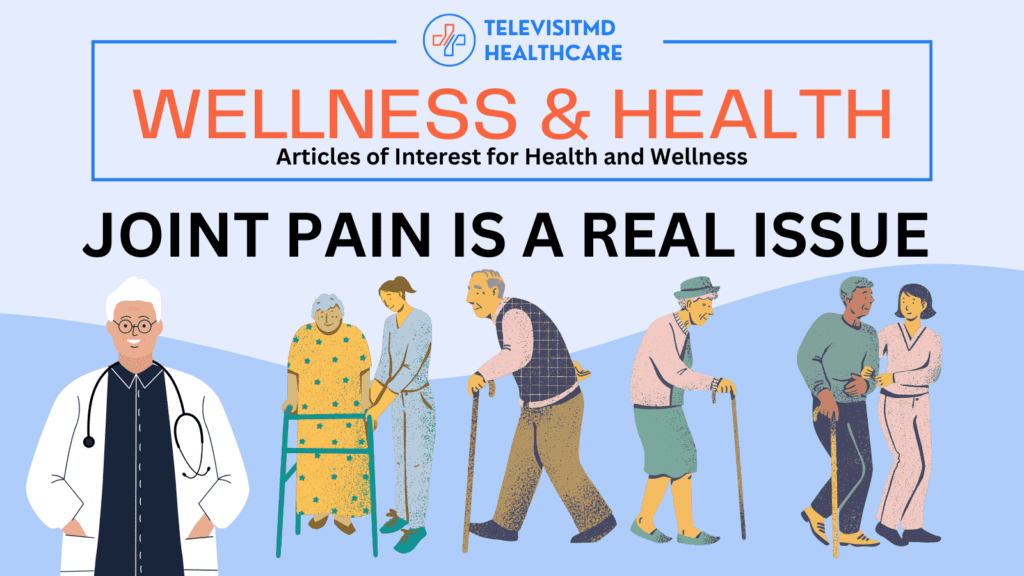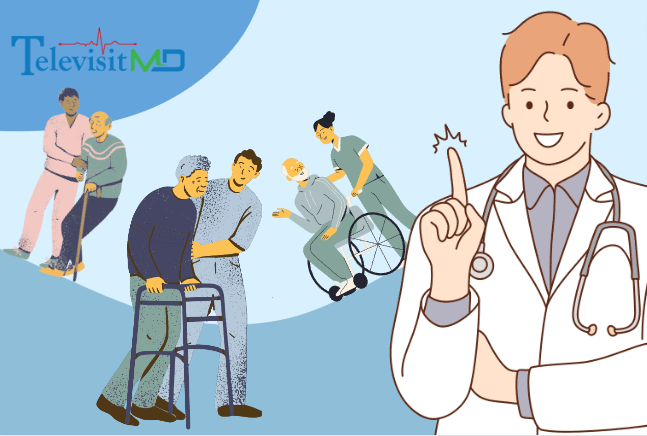
Your Toes, Your Knees, Your Shoulders, Your Neck
Pain is part and parcel of getting old. Inevitable. Undeniable.
The older you get, the more pain you will experience. Non-negotiable. Unstoppable.
And it is all over the place. It is all over your fast-getting fragile body. And you can never turn back time.
Yes, you are getting frail. You are getting weak. You are getting weary.
And you are about to suffer more, so much more in the next few days.
And weeks. And months. And years.
Hopefully, more decades for you. Long live, Grandpa! Long live, Grandma!
Your toes. Your knees. Your shoulders. Your neck. 1 more time!
Your toes. Your knees. Your shoulders. Your neck. Very good!
Your toes. Your knees. Your shoulders. Your neck. You are a pro!
Go stamp your feet and clap your hands. If you still can! Go try! Try harder!
Do I hear, “Ouch!”? Does it hurt? Excruciating pain. Extreme pain. And more to come.
Is it hopeless? No! There is still hope.
Is there no way out? Absolute no! There is still a way out.
Is there no chance to recover? Of course not! There is still a chance to recover.
Don’t you know, it is not the end of the world. Perhaps. Let’s end this chronic pain ASAP!
We all want a painless, effortless, and trouble-free life. In short, we want it simple and easy. But we know that it is impossible and improbable. Amidst our chaotic environment and hectic lifestyle, we still aspire to and desire a chill, relaxed, and unperturbed existence. As citizens of this great country, the land of the free that espouses democracy and embraces equality, we are already facing tons of issues and an abundance of problems.
The increasing prices of basic commodities. NO TO PRICE INCREASES!
The proliferating violence and crime incidences. NO TO VIOLENCE!
The burgeoning pollution across the cities and states. NO TO POLLUTION!
The immanent threat of terrorism in this seemingly borderless society. NO TO TERRORISM!
These are but a few of our current concerns that are creating anxiety in each one of us.
There’s more. Unemployment. Underemployment. High inflation. High taxes. Low salaries. No salary.
Too many to mention. Just too many. Unlimited problems and issues for everyone.
And the last thing that you want, the least of your concerns, should be a painful knee. Arthritis.
The dreaded inflammation of our joints. The feared swelling on your toes, knees, shoulders, and neck.
The irrefutable and incontestable fact that YOU ARE GETTING OLD.
You are old. And you are suffering from chronic pain caused by arthritis. A deadly combo!
According to the Centers for Disease Control and Prevention (CDC),
Chronic pain caused by arthritis affects millions of people in the United States every year. About one in four adults with arthritis—15 million people—report experiencing severe joint pain related to arthritis. Additionally, nearly half of adults with arthritis have persistent pain
Are you one of them? Are you part of that growing statistic? Do you feel the pain? CDC adds-
Arthritis-related severe joint pain affects adults of all ages, both sexes, and all races and ethnicities. Most of what we know about severe joint pain is for adults. The age-standardized prevalence of severe joint pain among adults with arthritis varies by state, ranging from 20.8% in Colorado to 45.2% in Mississippi
What exactly causes your arthritis?
Why do you feel and experience severe joint pain?
Why are your toes, your knees, your shoulders, and your neck hurting?
Let’s know the facts! It is time to understand what arthritis really is! Face and conquer your fears!
This is your first step to a painless or less painful life. You will know how to remove or ease the pain.
Never believe the saying, “What you don’t know won’t hurt you.”
Not knowing is being a coward. Not knowing will hurt you. Not knowing can kill you
According to Harvard Medical School’s Harvard Health Publishing-
Arthritis can be distracting. Distressing. And disheartening. It can make you hesitant. It can frustrate — and even prevent — you from doing all the things you love to do. It is, quite literally, a pain. There are more than 100 different types of arthritis. The most common are osteoarthritis and rheumatoid arthritis.
Distracting. Distressing. Disheartening. Exactly how you feel right now.
But again, knowledge is power. Understanding arthritis is power.
What is Osteoarthritis?
Harvard Health Publishing explains, “Osteoarthritis is the most common type of arthritis. It starts with the deterioration of cartilage, and the flexible tissue lining joints. The space between bones gradually narrows and the bone surfaces change shape. Over time, this leads to joint damage and pain. The symptoms of osteoarthritis usually develop over many years. The first sign is often joint pain after strenuous activity or overusing a joint. Joints may be stiff in the morning but loosen up after a few minutes of movement. Or the joint may be mildly tender, and movement may cause a crackling or grating sensation.
Osteoarthritis was long considered a natural consequence of aging, the result of the gradual wearing down of cartilage. The cause of osteoarthritis is much more complex than simple wear and tear. External factors, such as injuries, can initiate chronic cartilage breakdown. Inactivity and excess weight can also trigger the problem or make it worse. Genetic factors can affect how quickly it gets worse

What is the Cure or Treatment for Osteoarthritis?
Harvard Health Publishing expounds, “There is currently no cure for osteoarthritis. But there are effective treatments that can greatly improve a person’s quality of life by relieving pain, protecting joints, and increasing the range of motion in the affected joint. Therapy usually involves a combination of non-drug treatments such as heat, ice, and exercise; medication for pain and inflammation; and the use of assistive devices such as canes or walkers. In some cases, more aggressive treatment with surgery or joint replacement may be needed.”
Indeed, therapy is the key. Pain can be relieved. Osteoarthritis can be managed.
According to the Centers for Medicare & Medicaid Services (CMS), “Viscosupplementation therapy is part of the therapy used in the treatment of osteoarthritis of the knee. Osteoarthritis results from articular cartilage failure due to the complex interplay of genetic, metabolic, biochemical, and biomechanical factors with a secondary component of inflammation. In most patients, the initiating mechanism is damage to the articular cartilage either as a single large injury or a series of repeated smaller injuries. The primary symptom of osteoarthritis of the knee is pain, however, because cartilage is aneural, significant radiographic findings are often noted in asymptomatic individuals’ images for other reasons.
Synthetic hyaluronic preparations used as a viscosupplement are indicated for the treatment of pain in osteoarthritis of the knee in patients who have failed to respond adequately to conservative non-pharmacologic therapy and simple analgesics such as acetaminophen or non-steroidal anti-inflammatory drugs (NSAIDS).”
What about Rheumatoid Arthritis?
According to Harvard Health Publishing, “Rheumatoid arthritis is a chronic (long-lasting) inflammatory disease that causes pain, stiffness, warmth, redness, and swelling in joints. Over time, the affected joints may become misshapen, misaligned, and damaged. The tissue lining the joint can become thick and may wear away surrounding ligaments, cartilage, and bone as it spreads. Rheumatoid arthritis usually occurs in a symmetrical pattern, meaning that if one knee or hand has it, the other usually does, too.
The cause of rheumatoid arthritis is unknown, although it appears to be an autoimmune disease. When the body’s immune system does not operate as it should, white blood cells that normally attack bacteria or viruses attack healthy tissue instead — in this case, the synovium, or joint tissue. As the synovial membrane (the thin layer of cells lining the joint) becomes inflamed, enzymes are released. Over time, these enzymes and certain immune cells damage the cartilage, bone, tendons, and ligaments near the joint.
How then can rheumatoid arthritis be managed or treated if the cause is unknown? Knowing the unknown
Harvard Health Publishing shares, “Some research suggests that a virus triggers this faulty immune response. However, there is not yet convincing evidence that a virus is the cause of rheumatoid arthritis. At the same time, it appears that some people are more likely to get the disease because of their genetics. Environmental factors may also be important. For example, smoking is a risk factor for rheumatoid arthritis.”
How to at least check your rheumatoid arthritis? Physical examination
According to the Johns Hopkins Arthritis Center, “Symmetrical joint swelling is characteristic of rheumatoid arthritis that has been persistent for a period. However, when only a few joints are affected at the beginning of the disease, symmetry may not be seen and should not preclude the diagnosis of rheumatoid arthritis. Careful palpation of the joints can help to distinguish the swelling of joint inflammation from the bony enlargement seen in osteoarthritis, with the swelling often described as being doughy or spongy in rheumatoid arthritis in contrast to firm knobby enlargement in osteoarthritis.
Swelling of the proximal interphalangeal joints (PIP) and metacarpophalangeal joints (MCP) of the hands is a common early finding. Wrists, elbows, knees, ankles, and metatarsophalangeal joints (MTP) are other joints commonly affected where swelling is easily detected. Pain on passive motion is a sensitive test for joint inflammation as is squeezing across the MCPs and MTPs. Occasionally inflamed joints will feel warm to the touch. Inflammation, structural deformity, or both may limit the range of motion of the joint. Over time, some patients with rheumatoid arthritis develop deformities in the hands or feet.
The permanent deformity is an unwanted result of the inflammatory process. Persistent tenosynovitis and synovitis lead to the formation of synovial cysts and to displaced or ruptured tendons. Extensor tendon rupture at the dorsum of the hand is a common and disabling problem.”
Who is more likely to develop rheumatoid arthritis and feel the pain? Adam or Eve? Grandpa or Grandma?
Johns Hopkins Arthritis Center explicates, “Rheumatoid arthritis has a worldwide distribution with an estimated prevalence of 1 to 2%. Prevalence increases with age, approaching 5% in women over age 55. The average annual incidence in the United States is about 70 per 100,000 annually. Both incidence and prevalence of rheumatoid arthritis are two to three times greater in women than in men. Although rheumatoid arthritis may present at any age, patients most commonly are first affected in the third to sixth decades.”
You will never understand everything about arthritis. There are just too many unknowns. But one thing is for sure, you now realize that it is complex and complicated. It is not just a simple joint pain. It is not just an elementary swelling or inflammation. Your toes, your knees, your shoulders, and your neck may experience and suffer chronic pain. And yet, you can never fully comprehend why.
But it can be managed. You can ease the pain. You don’t have to suffer that much.
And you want that. You really, really, really want that.
To understand more about treating, managing, or relieving your joint pains, call TelevisitMD now!
REFERENCES https://www.cdc.gov/arthritis/pain/joint-pain-adults.htm https://www.cms.gov/medicare-coverage-database/view/lcd.aspx?lcdid=33767&ver=36&bc=0 https://www.health.harvard.edu/topics/arthritis https://www.health.harvard.edu/a_to_z/rheumatoid-arthritis-a-to-z https://www.hopkinsarthritis.org/arthritis-info/rheumatoid-arthritis/ra-sympt oms/
[…] it is tough. It is not the easiest thing to do at your age. You already feel some chronic pain on your toes, knees, shoulders, and head. There is a barrage of tingling sensation across your frail and fragile body. You always need to […]